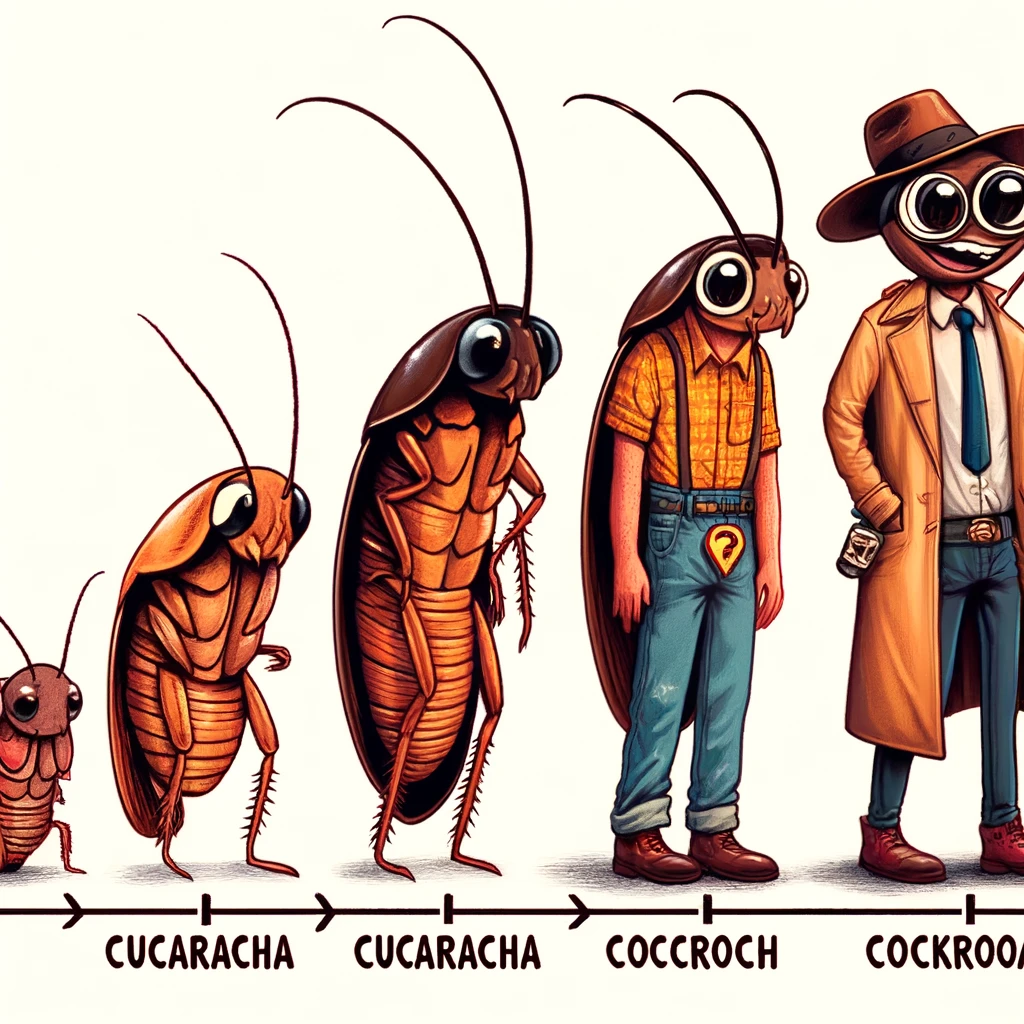How did cockroaches get their name?
 Cockroaches are some of the most notorious pests in the world, known for their resilience and ability to thrive in various environments. But have you ever wondered how these insects got their name? The etymology of the word “cockroach” is as fascinating as the creatures themselves. In this article, we’ll delve into the history and origins of the name “cockroach,” tracing it back through different languages and cultures.
Cockroaches are some of the most notorious pests in the world, known for their resilience and ability to thrive in various environments. But have you ever wondered how these insects got their name? The etymology of the word “cockroach” is as fascinating as the creatures themselves. In this article, we’ll delve into the history and origins of the name “cockroach,” tracing it back through different languages and cultures.
The Etymology of “Cockroach”
Spanish Roots
The name “cockroach” is derived from the Spanish word “cucaracha.” The term “cucaracha” has been used in Spanish-speaking countries for centuries to describe these insects.
- Cucaracha: In Spanish, “cucaracha” is a general term for cockroach. The word itself likely comes from a combination of “cuca” (a term for a type of beetle) and the suffix “-racho” or “-racha,” which could be a diminutive form.
Transition to English
When English-speaking settlers encountered cockroaches in the Americas, they adopted the Spanish term but modified it to fit English phonetics and spelling.
- Cockroach: The English adaptation “cockroach” first appeared in the early 17th century. The transformation from “cucaracha” to “cockroach” likely involved a process known as folk etymology, where unfamiliar foreign words are changed to resemble more familiar English words. In this case, “cock” (a familiar word) and “roach” (a type of fish) were combined to form “cockroach.”
Historical References
Early Descriptions
Cockroaches have been known to humans for thousands of years, and references to them appear in many ancient texts.
- Classical References: Ancient Greeks and Romans described insects that are believed to be cockroaches. Aristotle mentioned them in his writings, referring to them as “blatta,” which is still used as a scientific term for the cockroach family.
- Medieval Texts: During the Middle Ages, cockroaches were often referred to using Latin terms derived from “blatta,” and they were commonly mentioned in discussions about pests and household insects.
Cultural Impact
Songs and Folklore
The word “cucaracha” is famously associated with the traditional Mexican folk song “La Cucaracha.” The song tells the story of a cockroach that cannot walk, and over the years, it has been adapted to include various humorous and political verses.
- La Cucaracha: The song “La Cucaracha” became popular during the Mexican Revolution, with soldiers creating new verses to reflect current events and political satire. The enduring popularity of the song has helped cement the word “cucaracha” in popular culture.
Scientific Classification
Taxonomy
In scientific contexts, cockroaches are classified under the order Blattodea. This order includes both cockroaches and termites, highlighting the close evolutionary relationship between these insects.
- Blattodea: The name “Blattodea” comes from the Latin word “blatta,” used by Aristotle and other ancient scholars. Within this order, there are several families, including Blattidae and Blattellidae, which encompass the various species of cockroaches.
The name “cockroach” has a rich history that spans multiple languages and cultures. From the Spanish “cucaracha” to the English “cockroach,” the term has evolved over centuries, reflecting both linguistic changes and the enduring presence of these resilient insects in human society. Understanding the etymology and historical context of the name adds another layer of fascination to these common yet remarkable creatures.
Stay curious and keep exploring the fascinating world of insects. If you encounter cockroaches in your home, remember their storied history and take steps to manage and control their presence effectively. For more interesting facts and practical advice on dealing with cockroaches, explore our other articles and resources.
- The Life Span of a Cockroach
- Do Cockroaches Eat Clothes?
- Do Cockroaches Have Teeth?
- Shrimps and Cockroaches
- Will Sleeping with the Light On Keep Cockroaches Away?
- How to get roaches out of your car overnight
- Do Cockroaches Feel Pain?
- How Many Legs Do Cockroaches Have?
- Comparing Cockroach Eggs Size for Different Types of Cockroaches
- Identifying a Cockroach Bite on the Lips or Face
- Black Water Bug Identification and Control
- Why Do Water Bugs Come Out At Night?
- What Does Roach Rash Look Like?
- Can Cockroaches Bite Your Eyelid?
- Can Cockroaches Live in Your Balls?
- How did cockroaches get their name?
- Why Do Cockroaches Shed Their Skin?
- What Smell do Palmetto Bugs Hate?
- Baby Palmetto Bug: Identification and Control
- Cockroach Eggs vs Poop: How to Tell the Difference
- How to Get Rid of Water Bugs
- How Long Can a Cockroach Live Without Air?
- The Lifecycle of the German Cockroach: From Egg to Adult
- Do Mice Eat Roaches
- Wood Roach vs. Cockroach

